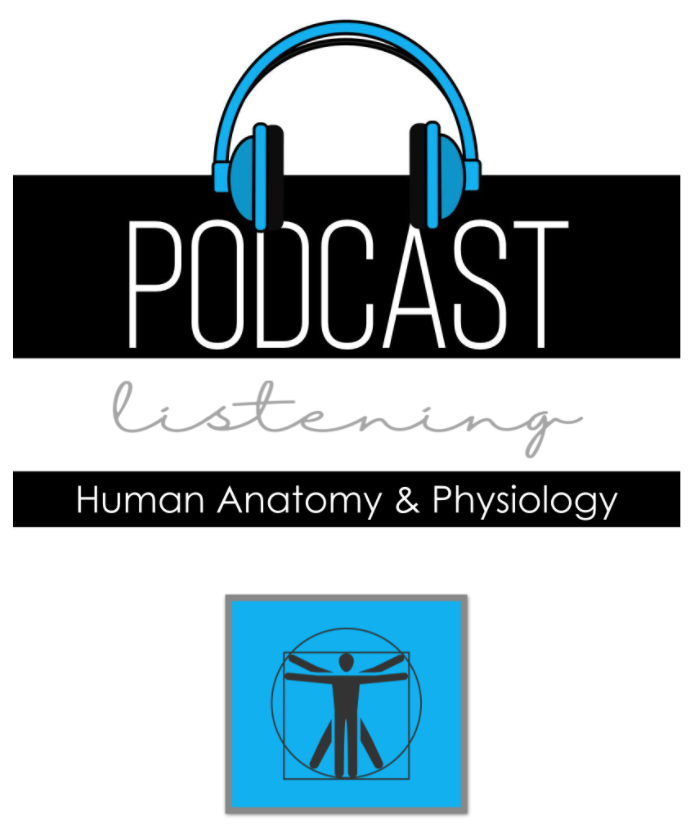How to Use Podcasts in the Classroom
What are Podcasts?
According to Podcast Insights, the term Podcast is actually a blend of the words iPod and Broadcast. Podcasting started as mostly an independent way for individuals to get their message out there and build a community of people with similar interests.
There isn’t a pre-determined length, format, style, production level, or anything else. Podcasts can be broken up into “seasons” like a TV show or be episodic and ongoing. A weekly release for new episodes is common, but there are daily podcasts, weekly podcasts, and really any cadence (or lack thereof) that the creator desires.
Put simply, a podcast is a series of episodes. These episodes are audio files that are likely stored with a podcast hosting company like Spotify or Apple Podcasts. You can subscribe to podcasts, which makes it easy to get notified (via your favorite podcast app) when new episodes come out.
Why Use Podcasts in the Classroom?
In a recent Cult of Pedagogy blog post, Jennifer Gonzalez interviews three leaders in educational podcasting who explain why podcasts are a great addition to your curriculum (see infographic to the right).
Her blog post is about podcast listening, but you can also have students create their own podcasts. Betsy Potash from Spark Creativity offers a complete project-based learning unit on student-created podcasts.
Betsy writes, “Podcasting is as an ideal 21st century medium for students to experiment with. Think of the skills of a podcaster – writing, editing, speaking, recording, interviewing, researching, and designing. With millions of podcast episodes in circulation, and media organizations, business figures, and celebrities starting pods left and right, it’s easy to show students that podcasting is relevant today. “
If podcast creation doesn’t fit into your curriculum, consider building a listening assignment into each unit. You can have students listen to a podcast at the beginning of a unit as a way to generate interest in the topic or at the end of a unit as a way to extend and apply what they have learned.
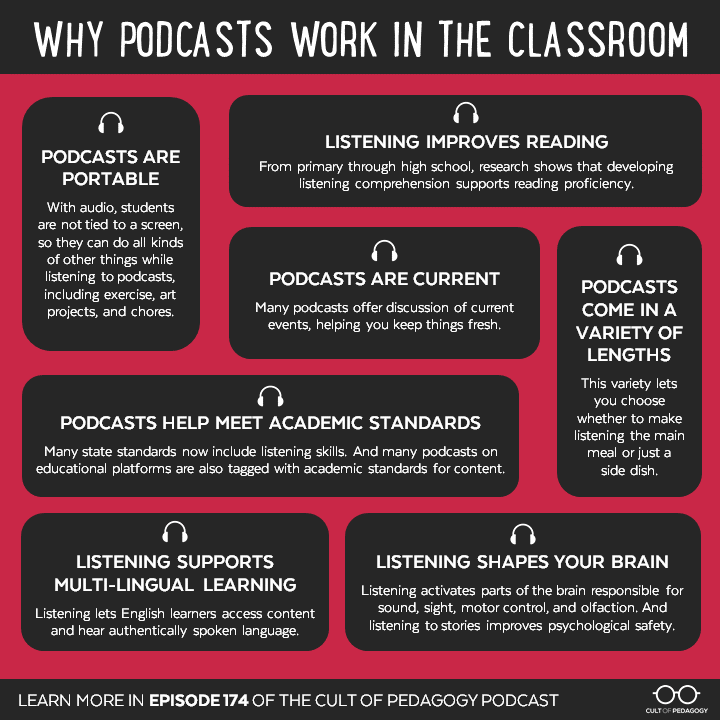
How to Build a Podcast Listening Assignment
Step 1
Use a podcasting app like Spotify to curate playlists of episodes that would fit your content area and be appropriate for high school students. You can create separate playlists for each unit and add to them as new episodes come out.
Step 2
Embed your podcast playlists for each unit on your Canvas page. Provide links to the podcast transcripts for students who prefer reading to listening.
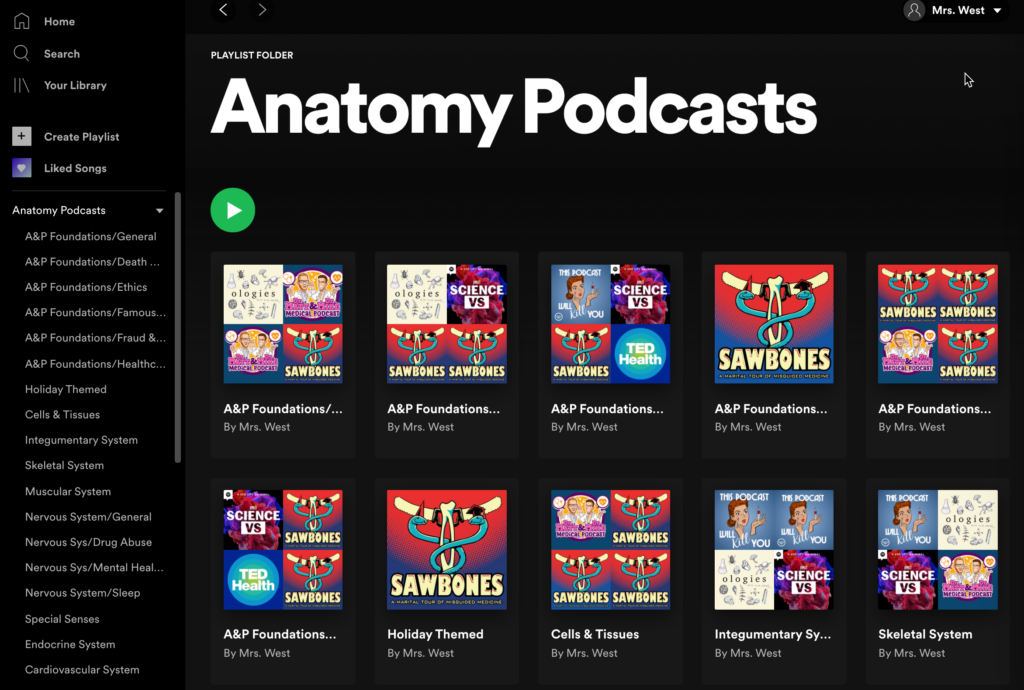
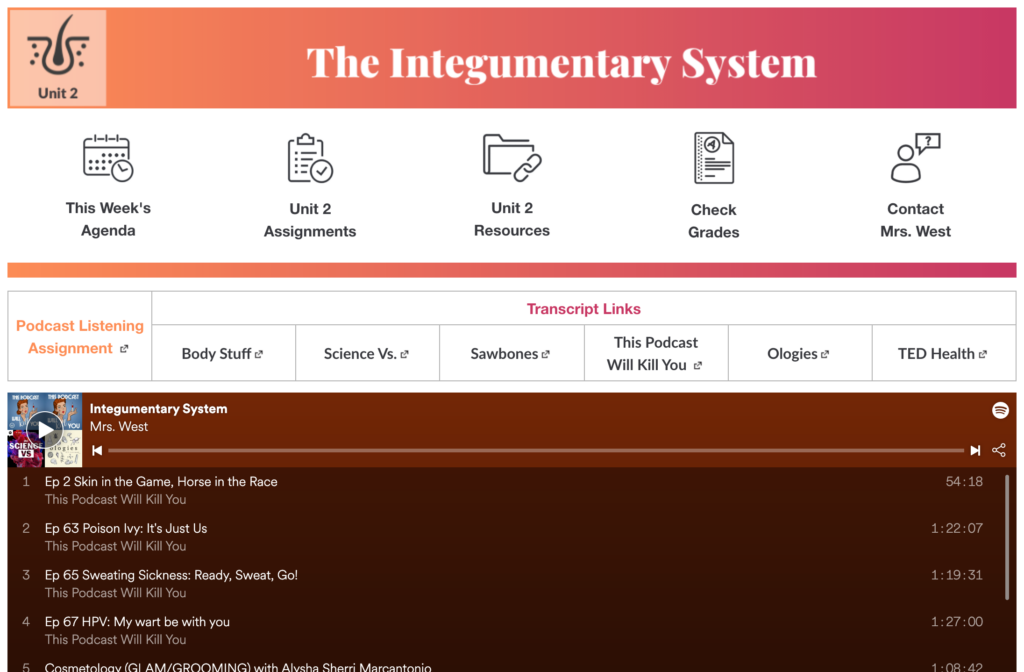
Step 3
Host a “Podcast Cafe.” Choose 3-6 episodes from different podcasts related to your content area. Put their titles and descriptions into a document that students can use to rate and review each podcast.
Since many podcasts are more than 30 minutes in length, direct students to listen to only 10 minutes of each one as a sample. This will be enough for them to get a feel for which podcasts they find interesting and which hosts they enjoy listening to.
Step 4
Give students the Podcast Listening Assignment and a playlist of episodes to choose from. The sample assignment shown here has a variety of options for both input and output. For input, students can choose to listen to the podcast or read the transcript. For output, students can choose to complete the listening guide, create a one-pager, or create an infographic. The templates for each are shown below.
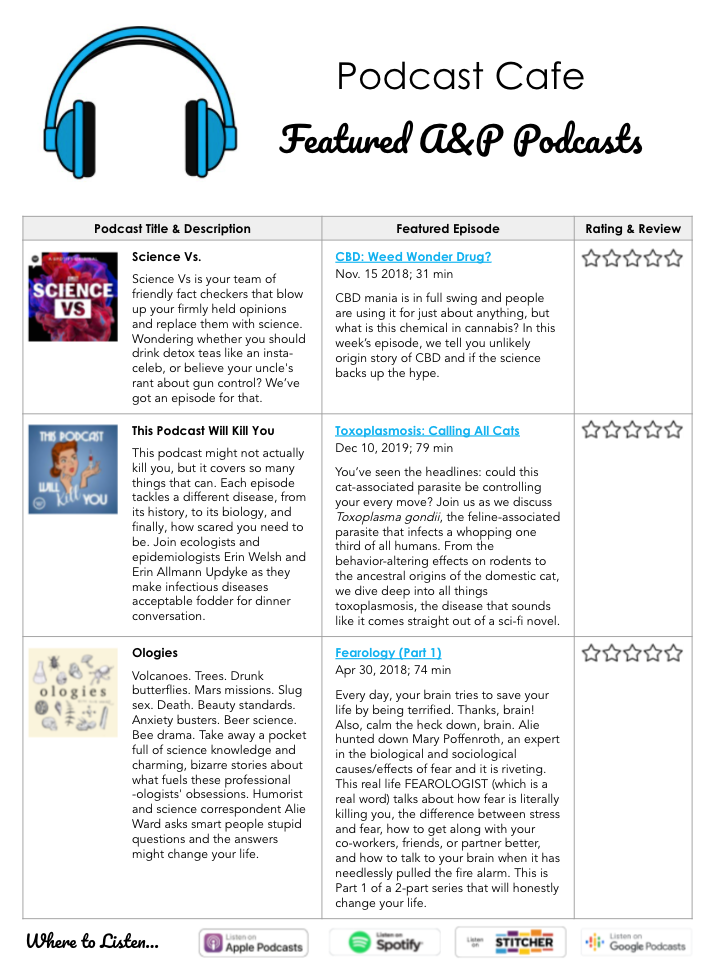

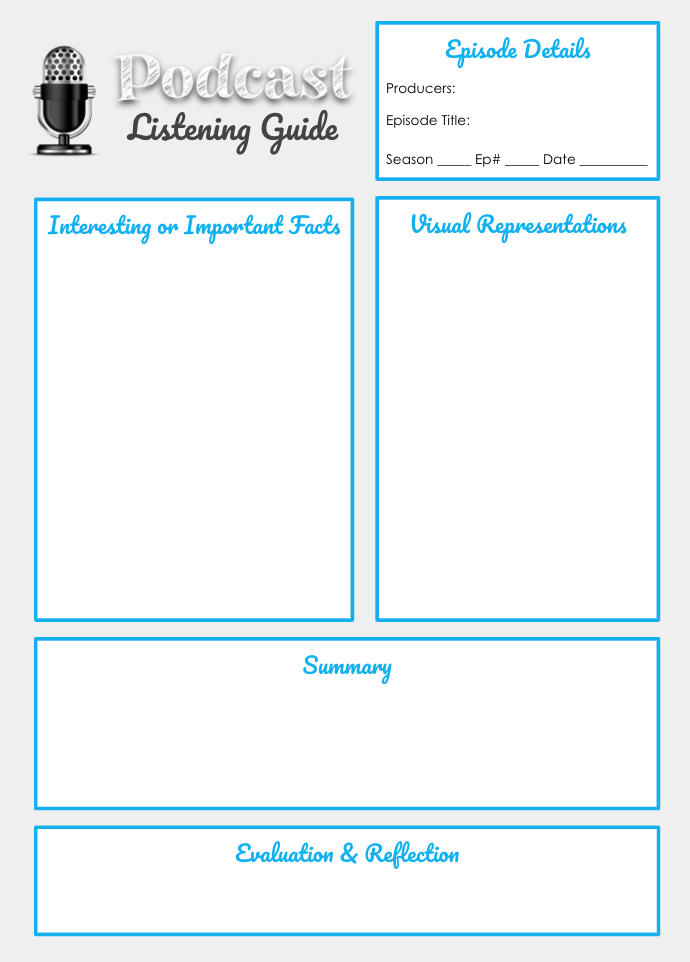
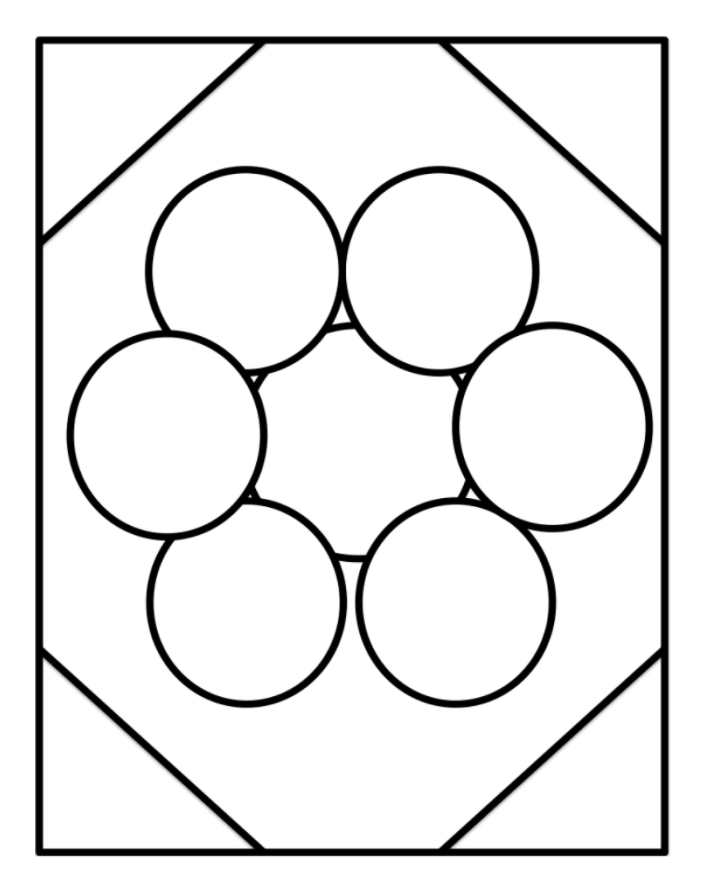
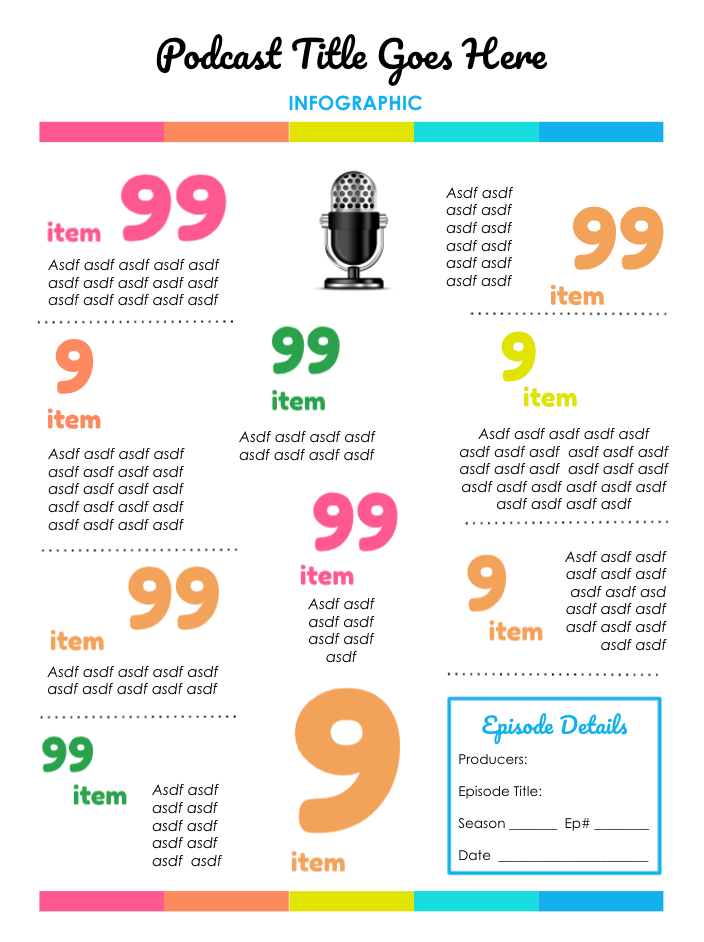
Ready to try this yourself? Download the editable Podcast Cafe and Podcast Listening assignments. If you have any questions, please contact Jen West from PVHS Science at jennifer.west@puhsd.org.

